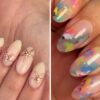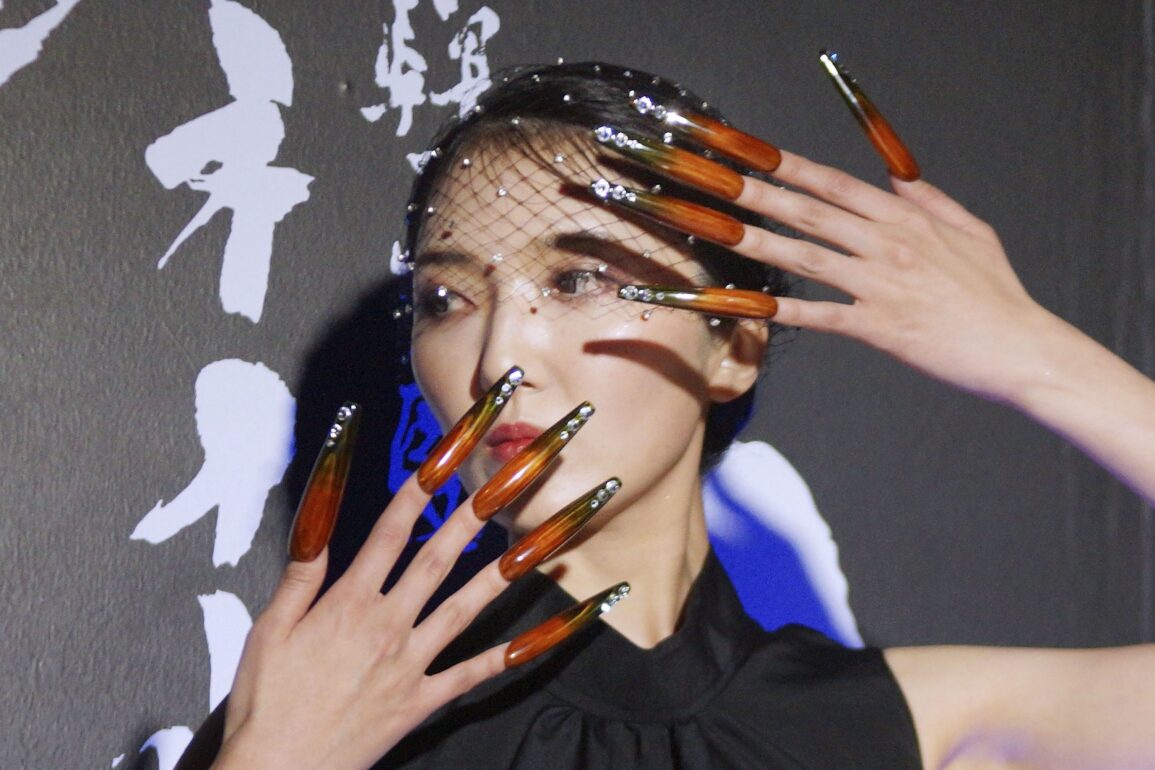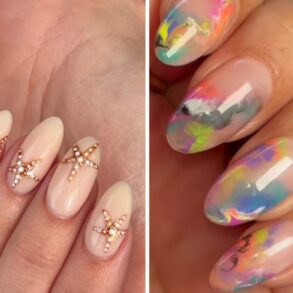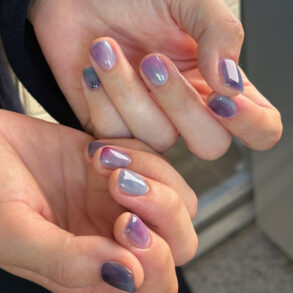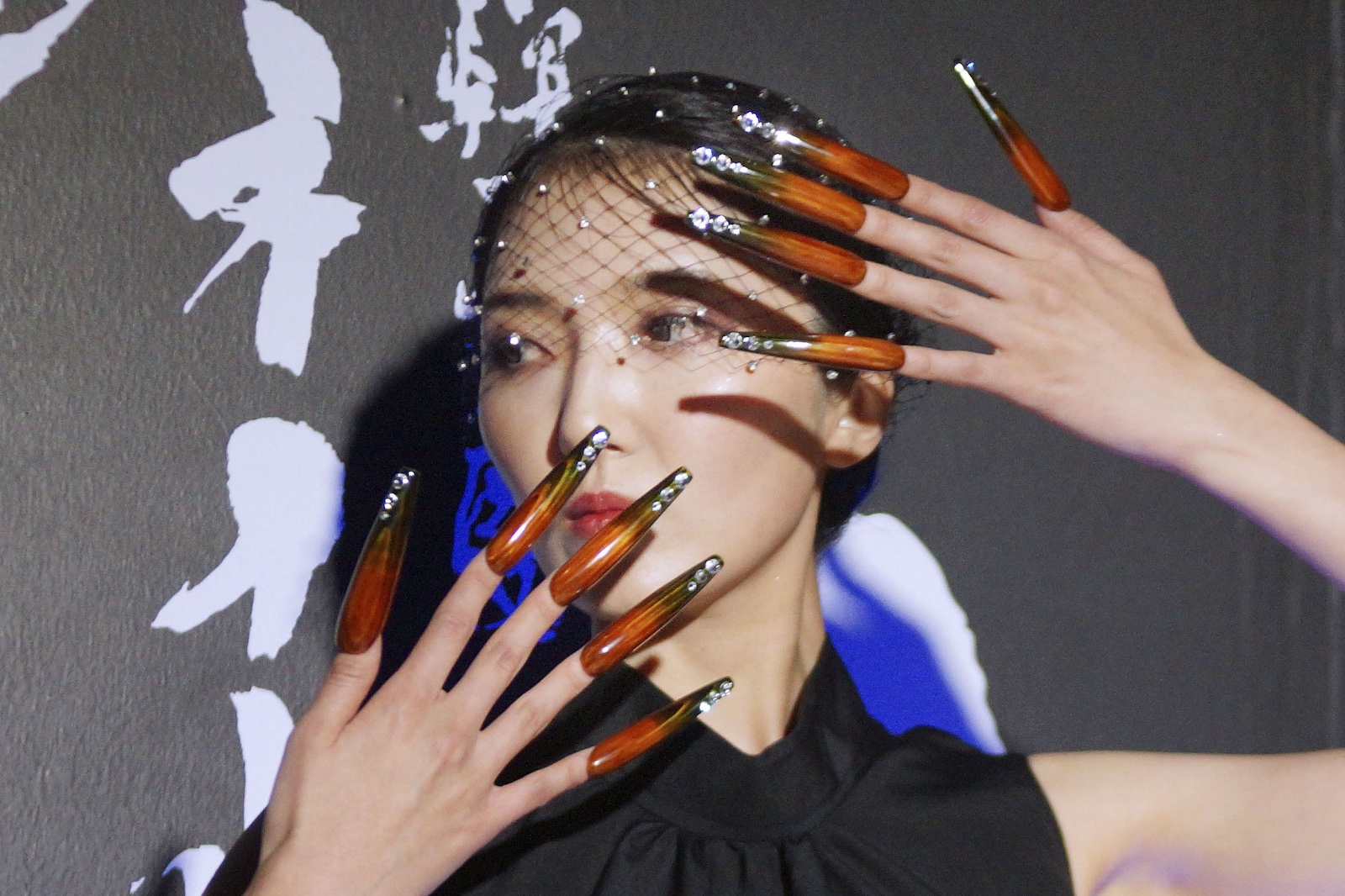
A nail technician and lacquer craftsman in central Japan are showcasing their combined talents through nail art that uses a traditional wood lacquerware technique to dazzle audiences at fashion shows and elsewhere.
The Hida-shunkei lacquerware was developed in the Hida mountains around Takayama, a popular hot spring city in Gifu Prefecture, some 400 years ago but its future is now in doubt as the number of artisans has dramatically fallen in recent years due to a lack of successors keeping the tradition alive.
For Naoko Sato, 48, the nail designer who runs a salon in Takayama and came up with the idea to create her own nail art using the lacquerware technique, showcasing the lustrous but elegant fake nails on models is her way of promoting the beauty of Hida-shunkei.
In 2022, she produced nail extensions with local cypress, consulting Toshihiko Kawahara, 63, a Hida-shunkei lacquerware painter, who agreed to collaborate on the project.
Since Sato must work on chiseling the nails when not tending to her regular job at the salon, she says it takes around three months to complete a set of nail enhancements. The finished product is 9 centimeters long and approximately 3 to 5 millimeters thick, and decorated with the glossy Shunkei lacquerware.
At a show held in Takayama in April by the duo, models in kimono and other dresses took to the runway flashing their impressively long, glossy talon-like nails with their various understated embellishments.
“The show was awesome. I want people around the world to know the charms of Hida’s traditional craft,” said Ayumi Ishigaki, 46, who works in Takayama and uses Hida-shunkei trays, saucers and other items in her everyday life.
Examples of Hida-shunkei lacquerware include the tiered lunch boxes often used to hold traditional Japanese foods, flower vases and other wooden items coated with a shiny caramel-brown finish. The luster becomes more pronounced with use, revealing the rich wood grains underneath the lacquer.
The products are produced jointly through woodworkers who process the timber and lacquerware painters such as Kawahara. But the decline of the traditional craft has left only eight Hida-shunkei lacquerware painters still operating, of whom Kawahara is the youngest.
Like other nail technicians, Sato usually uses conventional materials such as synthetic resins for her nail extensions.
When Sato visited Kawahara’s workshop two years ago with the intention of learning how to devise her own wooden nail art, she learned he has nobody willing to take over and carry on his business.
She was saddened by the thought, but hoped that her new nail art endeavor might arouse young people’s interest in Hida-shunkei.
Kawahara was surprised by Sato’s planned application of the technique but agreed to work with her if she could design the nails. He adopted a different painting process from usual in order to enhance the luster of lacquer used.
He has high expectations that people both inside and outside the lacquerware industry will be inspired to find new applications for the painting technique.
At a show held by Sato in New York last year, fashion industry figures expressed amazement that nails were made of wood.
She is currently promoting Hida-shunkei nails for weddings and other galas at home and abroad.
“I want to pass on the beauty of Hida-shunkei to the world and uphold the traditional craft using nail art,” Sato said.
© KYODO
This post was originally published on this site be sure to check out more of their content.


